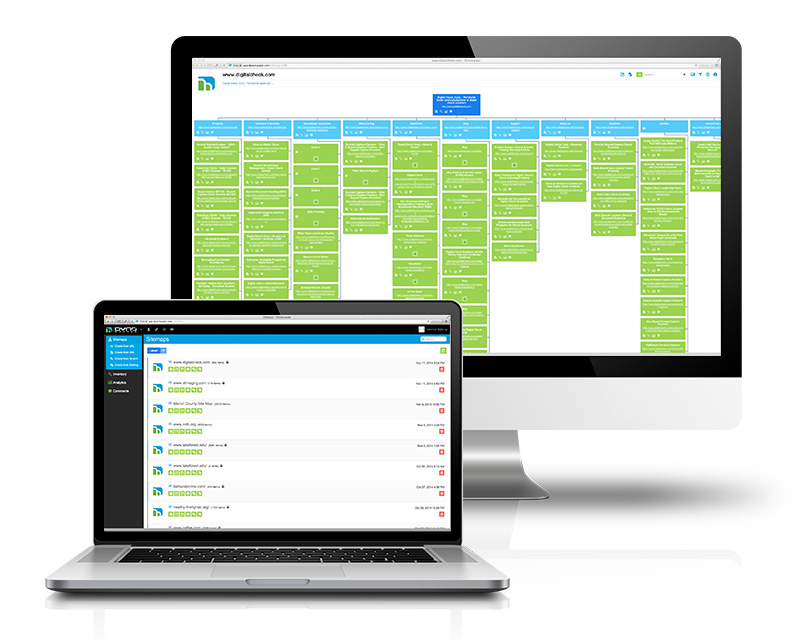The Average Joe isn’t likely to understand or even care to understand how search engines work. It’s just a fact that you can go to Google, type in a keyword or a search term and voila! You’ve got pages of answers waiting to be read or reviewed. It’s like magic. Well, most times at least. I’m sure there have been other times when you’ve made a search and the link that is supposed to contain your keywords is not exactly what you have in mind or perhaps the link is broken—in cases like this, you might automatically assume that the search engine is broken, but the truth is that there’s much more to search engines than you might even imagine.
In order for a search engine like Google, Yahoo! or Bing to work (and work well) there are two things that make search engines work efficiently—a sitemap and the search spider or robot that crawls website pages and indexes those pages for search results. You know, the pages of answers that you see after you’ve searched for something in particular.
So, what is this thing called a sitemap or visual sitemaps and how are they beneficial? A sitemap is essentially a page or pages that function as a directory of your website, listing all of the links to all documents and files that are found on your site. These are random listings of links, either. A sitemap is highly organized in such a way that provides website users with an idea of how all of the information can be found on the website, kind of like a table of contents or treasure map, even. Visual sitemaps are considered to be a concept map of your website’s content (see right), and XML and HTML sitemaps are what helps visitors and search bots find what they are looking for.
HTML sitemaps
HTML sitemaps help a user navigate throughout a website by displaying a visual hierarchical representation of the website on one page to click through. They show the parent and child relationship of the website pages in a linear format. Providing this easy to follow outline of pages can help users navigate and find the content they desire easier.
XML sitemaps are different than HTML sitemaps because they are created for search engine spiders and not your regular website visitor. Their primary function is to make the indexing of website pages easier for search engines. Each XML sitemap has detailed information that can show how often a page is updated, so that search engine crawlers know when to pay your web site another visit. It is impossible to show up in search engines if your pages are not indexed, so XML sitemaps are a necessity for any website.
Makes perfect sense, doesn’t it? But what is this thing called a spider? In simple terms, a spider is a bot or robot that collects data and copies the content to be stored in the search engines database when keywords are fed into the search dialogue box. The spider will read the content of the website and then sends another spider to follow the links and copy the content contained in them.
This, above, is yet another reason why having a sitemap (sometimes multiple sitemaps) for your website is imperative to its success, especially from an SEO standpoint. In order for your sitemap to work seamlessly as it should, a visual sitemap generator can help you create visual sitemaps, XML sitemaps and even HTML sitemaps. A visual sitemap generator is more than just a tool, it’s a powerful application that can change the way visitors view your site; it can make drastic improvements to your conversions and profits, and overall performance.
How? Instead of you having to manually create sitemaps for your website, a visual sitemap generator will crawl your website and create an automated sitemap of up to 50,000 URLs and up to 10 MB. If you have a larger website or even a monstrous website like Amazon, no problem! These tools can easily create multiple sitemaps in minutes.
Once your sitemaps are completed you will have the opportunity to look at your website from another angle, seeing what works, what doesn’t and frankly, what needs to go. You’ll also be able to find links that are broken and ensure that your site is running at its best—keeping both search engines and website visitors on the page. Broken links are a bad thing…a very very bad thing. Imagine your visitors coming to your website searching for something, only to come up with a bunch of bad links. It’s likely that they will never return. Ever.
Aside from the above, there are quite a few benefits to having visual sitemaps for your website including, but not limited to:
- Advertising value if a relevant product or service company reaches your website as it would be easier for them to see how best they can position themselves in different pages of your site—placing ads, etc.
- Traffic flow to your website will become more constant. If your website has a sitemap, potential buyers will have a much easier time accessing your latest products or service offerings.
- Navigation is much easier for both search engines and visitors for websites that have visual sitemaps. If what your visitors are looking for is on your website, they will have the ability to find what they are looking for much easier (and faster), making their time on your website more of an enjoyable experience.
- SEO VALUE WILL SKYROCKET!
Your website will become relevant, easily searchable and search engine optimized for success. In addition to the above, if you use a visual sitemap generator like DYNO Mapper you will have the ability to take advantage of a slew of other features including keyword tracking, content inventory and auditing, Google Analytics integration and more. If you’d like to try out a DYNO Mapper for your next project, be sure to sign up for our fully-functional free trial..
DYNO Mapper – Visual Sitemap Generator from DYNO Mapper – Sitemap Generator on Vimeo.





